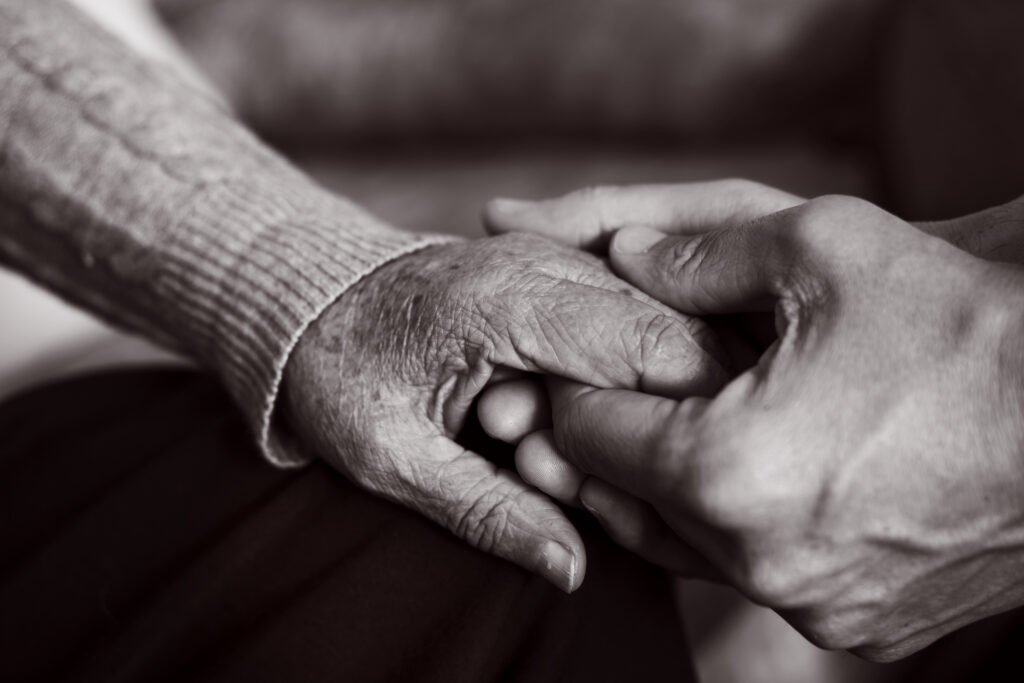Published October 1, 2025
Two new University of Iowa studies are enhancing our understanding of negative life events and stressors that often precede suicide deaths in the U.S.
While life stressors can persist over extended periods, acute crises often emerge in the days or weeks leading up to suicide deaths—yet these short-term events remain less well understood. Examples include financial hardship, relationship conflict, legal trouble, and poor physical health (e.g., cancer).
Together, these studies—one published in The American Journal of Preventive Medicine and the other in Journal of Psychiatry and Brain Science—revealed distinct crisis patterns preceding suicide deaths and underscored the widespread impact of interpersonal relationships, the role of criminal behavior, and the interconnected nature of various crisis types.
Amanda Sursely, who graduated last spring from the University of Iowa department of epidemiology, led the studies as part of her PhD work.
“By examining the crises that precede suicide, the studies provide insights to enhance prevention strategies and refine clinical screening tools,” she said.

Mental health conditions
One study examined nearly 55,450 suicide deaths among U.S. adults aged 18 to 65 recorded in the National Violent Death Reporting System (NVDRS) between 2013 and 2021. Each case involved at least one crisis event occurring within two weeks prior to death.
The NVDRS is a confidential database that provides critical insights into the broader context of violent deaths in the U.S., including suicide—capturing the ‘who, what, where, when, and how’ behind each case.
Using a data-driven analytic approach, the research team identified six distinct crisis profiles by examining overlapping life circumstances and grouping individuals based on shared patterns and demographic characteristics.
Fewer than half (47.2%) of the individuals had a known mental health condition at the time of their death.
Of the six crisis profiles identified, four were characterized by a single dominant crisis—criminal involvement, intimate partner issues, physical health problems, or other isolated crises. The remaining two profiles involved multiple co-occurring stressors leading up to the suicide. These included: (1) substance use, relationship problems, and eviction; and (2) financial hardship, job issues, and intimate partner conflict.
These six profiles were consistent regardless of whether a person had a known mental health condition. Individuals without a documented mental health problem were slightly more likely to fall into crisis patterns involving criminal or intimate partner crises.
Physical health problems
Adults aged 55 to 65 were more likely than younger individuals to belong to the physical health crisis profile.
Sursely said she found it interesting that physical health crises emerged as one of the major crisis profiles, given that previous research has identified several interventions that successfully reduce psychological distress in patients with cancer—yet only four studies have ever examined suicide-related outcomes.
“In our work, nearly a quarter of the qualitative health-related cases involved cancer diagnoses,” she said. “This highlights an important gap: While effective interventions already exist to support people facing crises like cancer, very few have been evaluated for their impact on suicide risk.”
Sursely said that one approach could help us quickly strengthen the evidence for prevention strategies targeting real-world crises that raise suicide risk.
“We don’t necessarily need to reinvent the wheel. By expanding the outcomes measured in the evaluations of existing interventions, such as adding suicide-related outcomes to programs already designed to support cancer patients, we can begin to understand whether they also reduce suicidality,” she said.

Relationship issues
Relationship crises played a significant role in three of the six identified crisis profiles, which represented 74% of the study population. These profiles extended beyond intimate partnerships to include other types of relationships, such as family, friends, and other close connections.
“The nature and context of conflict differed widely— from ongoing familial tension regarding substance use, to acute fights over infidelity,” Sursely said. “Given this variation, prevention efforts need to be equally broad. Couples-based therapies can strengthen romantic relationships, but family-based approaches may be more appropriate in other contexts.”
In addition, she said, targeted interventions may be important for specific types of relationship strain, for example, support for individuals experiencing intimate partner violence, or treatments addressing substance or alcohol use that may fuel conflict.
“These findings suggest that tailoring interventions to the specific type of relationship crisis, not just assuming a one-size-fits-all approach, could be an important way to advance suicide prevention,” Sursely said.
Alcohol addiction
Another study analyzed narrative reports from 1,670 suicide deaths to uncover the circumstances and relationships occurring in the final two weeks of life. It found that addiction-related crises, especially alcohol-related ones, were very common.
These insights were drawn from brief reports compiled through the national reporting system (NVDRS) by coroners and medical examiners, law enforcement records, suicide notes, and interviews with family members and friends.
The study examined cases of individuals 18 to 65 years of age who died by suicide over a decade (2012 – 2021) and whose circumstances surrounding their deaths were known and captured in NDVRS.
Within NVDRS, crisis categories present in each case are recorded, representing 17 areas, such as eviction from a home, disaster exposure, and substance use. Sursely’s team studied 100 randomly selected narrative reports representing each of the 17 categories.
The study revealed a wide range of experiences within each crisis category, emphasizing the need to tailor prevention efforts to interrupt escalating cycles of distress.
For instance, many alcohol-related crises were closely tied to interpersonal conflicts, such as arguments with family members over alcohol use.
Criminal behavior
Perpetration of criminal behavior was present in 10 of the 17 crisis categories preceding suicide deaths, including offenses such as domestic violence, child sexual abuse, and driving under the influence (DUI).
The study also highlighted the potential for misclassification. This may occur when crisis categories are recorded inconsistently in the NVDRS or when responders document crises that began more than two weeks prior to the death. These findings underscore the variability in investigative practices across the U.S., particularly in terms of quality and depth.
Some resources:
- Suicide and Crisis Lifeline 988
- Mental Health & Emotional Safety UI IPRC)
- Suicide Prevention (UI IPRC)
- Rural suicide prevention toolkit (Rural Health Information Hub)
- Preventing suicide (CDC)
- Suicide prevention (Substance Abuse and Mental Health Services Administration – SAMHSA)
- American Foundation for Suicide Prevention